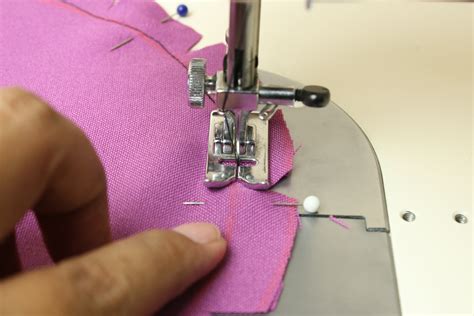How To Sew: A Beginner's Guide to Stitching Success
So you want to learn how to sew? Fantastic! Sewing is a rewarding skill that allows you to create unique clothing, mend items, and unleash your creativity. This comprehensive guide will take you through the basics, from gathering your supplies to mastering essential stitches. Whether you dream of crafting intricate dresses or simply fixing a ripped seam, we've got you covered.
Getting Started: Essential Supplies
Before diving into the world of stitching, you'll need a few key supplies. Don't feel overwhelmed; you don't need a massive collection to begin. Start with these essentials:
- Sewing Machine (Optional but Recommended): While hand-sewing is possible, a sewing machine significantly speeds up the process, especially for larger projects. Many affordable options are available for beginners.
- Needles: Assorted needle sizes are crucial. Different fabrics require different needle thicknesses.
- Thread: Choose a variety of colors to match your projects. All-purpose thread works well for most fabrics.
- Fabric Scissors: Sharp fabric scissors are essential for clean cuts. Avoid using them for paper to maintain their sharpness.
- Pins: Use pins to hold fabric pieces together before sewing.
- Measuring Tape: Accurate measurements are vital for successful projects.
- Seam Ripper: Mistakes happen! A seam ripper is your best friend for correcting errors.
- Iron and Ironing Board: Pressing your seams is crucial for a professional finish.
Basic Sewing Techniques: Stitches and Seams
Now for the fun part – learning to sew! We'll cover some fundamental techniques:
Hand Sewing: The Basics
- Running Stitch: This simple stitch is perfect for basting (temporary stitching) or creating decorative effects. It involves making small, even stitches along a line.
- Backstitch: A stronger stitch than the running stitch, the backstitch is ideal for seams that need to withstand stress.
- Slip Stitch: An almost invisible stitch, perfect for hemming or joining seams neatly.
Tips for Hand Sewing:
- Keep your stitches consistent: Even stitches create a more professional look.
- Don't pull the thread too tight: This can distort the fabric.
- Practice makes perfect: Don't get discouraged if your first attempts aren't perfect.
Machine Sewing: Getting Started
If you're using a sewing machine, familiarize yourself with its basic functions:
- Threading the Machine: Each machine is different, so consult your machine's manual.
- Adjusting Stitch Length and Width: Experiment with different settings to find what works best for your fabric.
- Using the Foot Pedal: Practice controlling the speed of the machine.
Tips for Machine Sewing:
- Start with simple projects: Begin with straightforward items like tote bags or pillowcases.
- Practice on scrap fabric: This will help you get comfortable with your machine before working on your final project.
- Always use a seam guide: This will help you maintain consistent seam allowances.
Common Sewing Projects for Beginners
Once you've mastered the basics, you can tackle these beginner-friendly projects:
- Simple Tote Bag: A great way to practice basic seams and construction techniques.
- Pillowcase: Another excellent project to hone your skills.
- Headbands: Easy to make and a fun way to accessorize.
- Simple Skirt: A slightly more challenging project that introduces more advanced techniques.
Expanding Your Skills
As your confidence grows, explore more advanced techniques like:
- Pattern Making: Learn to create your own patterns from scratch.
- Working with Different Fabrics: Each fabric has unique properties and requires different sewing techniques.
- Embroidery: Add decorative elements to your projects.
Learning to sew is a journey, not a race. Be patient with yourself, practice regularly, and most importantly, have fun! With dedication and practice, you'll soon be creating beautiful and functional items. Remember to search for tutorials online for visual aids and more detailed instructions on specific stitches and projects. Happy sewing!
